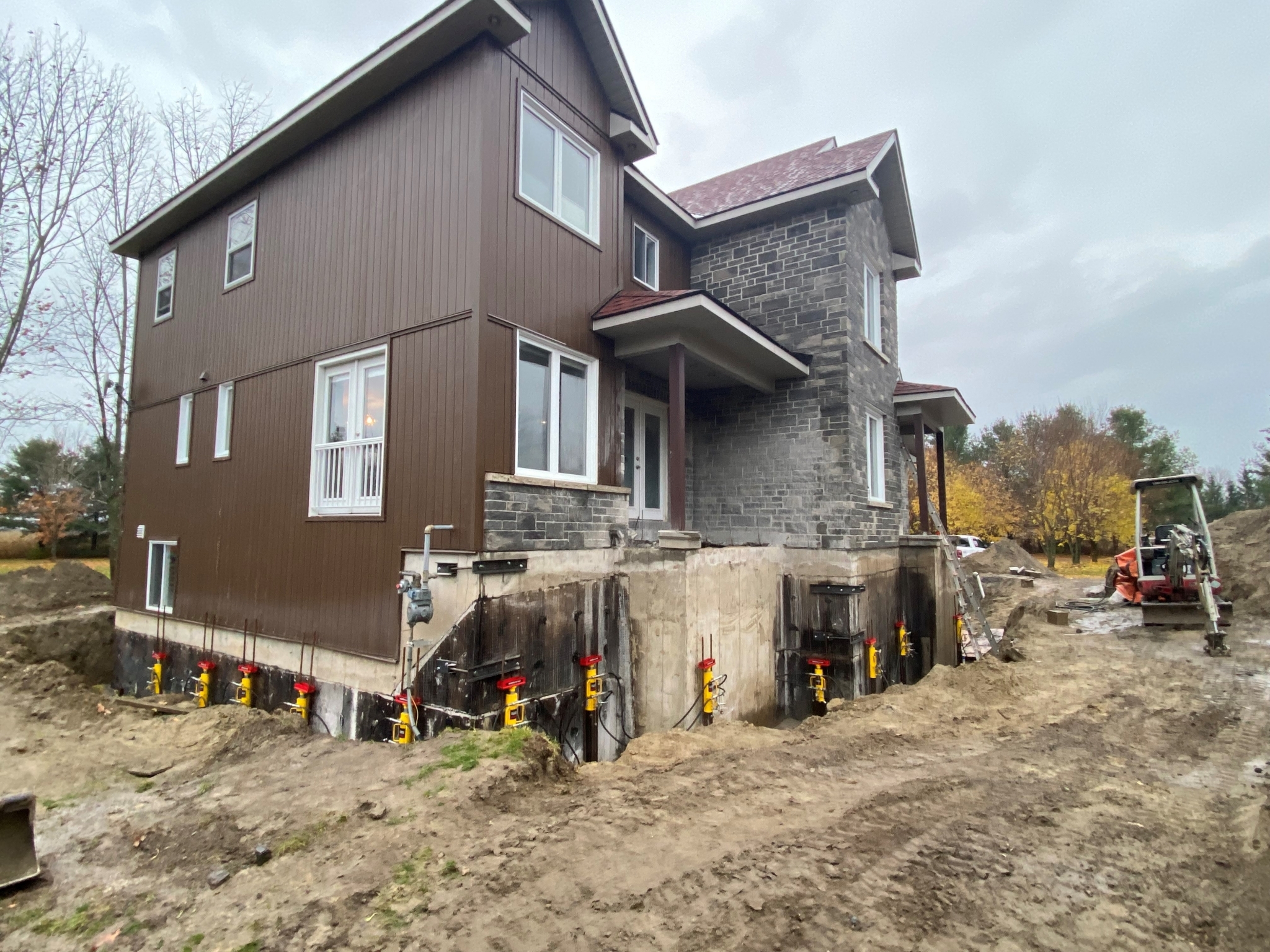
Découvrez notre technologie en vidéo
Pour des services ainsi que des résultats, de qualité de redressement, de stabilisation et de levage de bâtiments, de soutènement de colonnes sous-oeuvre et la décontamination de pyrite, exigez StabiliForce.
Les causes de défaillance des fondations
Mauvais état du sol
La défaillance des fondations peut être due à une mauvaise qualité du sol, à son expansion et/ou à sa contraction.
Drainage
Un drainage inadéquat peut avoir de sérieuses conséquences sur un bâtiment. L'humidité excessive provoque un tassement pouvant engender de l'érosion et/ou la consolidation.
Sol avant construction
L'état du sol avant la construction peut être un bloquant lorsqu'il est de basse densité ou mal compacté.
Optez pour les pieux hydrauliques
Les pieux hydrauliques obtiennent des résultats largement supérieurs en comparaison aux pieux vissés, tout en étant nettement plus efficaces et durables.
En utilisant cette technologie, nous pouvons corriger l'affaissement d'un bâtiment en utilisant le poids de celui-ci. Ainsi, seule cette technique permet aux pieux d'atteindre la roche. De plus, elle prend très peu d'espace et n'émet aucune vibration. De cette façon, il nous est donc possible d'enfoncer des pieux autant à l'intérieur qu'à l'extérieur d'un bâtiment. Ce type de pieux peut supporter le poids d'une bâtisse et de son système de vérins hydrauliques afin de redresser la fondation en partie ou totalement.
Voici les majeures différences entre :
Pieux hydrauliques
Pieux vissés
-
Ont une capacité de charge de 40 000 livre avec un facteur sécurité de 2
-
Permettent d'atteindre le roc
-
Supportent nos chaises de fondation approuvées et certifiées par WSP ingénierie
-
Sont remplis de béton afin d’assurer le maximum de capacité de charge
-
Ont une capacité de charge de 26 000 livres avec un facteur sécurité de 1.5
-
Ne permettent pas d'atteindre le roc
-
Délayent le sol dû à l'action de leur vissage durant l'enfoncement
-
Ne peuvent assurer une stabilisation totale selon le type de sol
-
Ne peuvent pas être rempli de béton.


